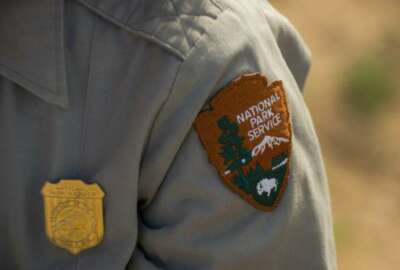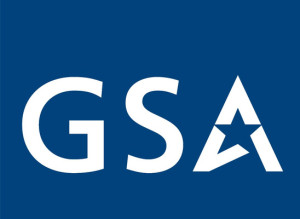
NPS coordinator addressing sexual harassment surveys, employee training overhaul
Tammy Duchesne says sexual harassment is not just a problem at the National Park Service, but that doesn't mean the agency isn't addressing the issue with 100...
How do you get 20,000 employees stationed around the world — some of them in off-the-beaten-path workspaces — all on the same page when it comes to putting an end to sexual harassment and employee misconduct?
That’s what Tammy Duchesne, the National Park Service’s sexual harassment prevention and response coordinator, is working to find out.
“It is a societal problem; we’re not the only ones who struggle, but that doesn’t mean that we are not 100 percent responsible for responding and addressing it head on, which we are,” Duchesne told Federal News Radio, after attending a June 7 House subcommittee hearing on her agency’s steps to identify and stop harassment and misconduct.
Duchesne stepped into the role in mid-March. She’s on temporary assignment from her post as superintendent at Kaloko-Honokohau National Historic Park in Kailua-Kona, Hawaii. The Massachusetts native also spent time as the superintendent of the Women’s Rights National Historical Park, in Seneca Falls, New York.
“We have parks in Guam, we have parks in Samoa, we have parks in Alaska, we have parks in the Virgin Islands … above and below the Equator, on both sides of the [International Date Line],” Duchesne said. “That is not an excuse for not understanding what’s going on, but again, the survey is an effort to be able to get not just the examples of have you been harassed, but the contact, so that we can make those interventions most tailored, and also to be able to design the most appropriate and effective training methods.”
The survey Duchesne mentioned, is a comprehensive audit of sexual harassment and misconduct within the National Park Service. The survey was conducted January-March, and final data from the answers are expected by the end of the summer.
“What we learn from the survey will determine our next steps to make sure that we are putting resources in the right places and we are addressing our highest priorities,” Duchesne said. “The survey really will provide that information. We need to be able to know where we’re most vulnerable and where our greatest needs are.”
The survey will be the first of its kind. While the agency has done some employee surveys on harassment and misconduct, they haven’t been at the same level of detail as this most recent one, which will be a baseline for measuring improvements.
“We will be able to know if we are moving closer to success once we have a baseline,” Duchesne said. “We don’t know what we don’t know. Once we have the survey results we will be able to say the results we learned in 2017 shows this for this population, this demographic, under these circumstances are where harassment is present. So we will have a baseline, we will begin to measure our success against that metric, which we have never had before.”
NPS consulted with representatives from the military, and used a subcontractor under the CFI Group, which is a contractor for the Interior Department.
Duchesne said the survey does more than just report on the presence of sexual harassment in NPS offices and parks.
“It will not just say this percent of women are harassed, this percent of men, but it will look at the context; where in people’s career, what locations, what grade levels they are,” Duchesne said. “For instance, what grade were they when they were first harassed, has it changed from the last 12 months to prior in their career. So basically it will be through the analysis that we will be able to understand where it is most prevalent when it starts, who are most likely to be the victims, what are some of the impediments to reporting, what will help people feel more comfortable to report. So it’s not just prevalence of harassment, it’s also the barriers to reporting and how to basically encourage people to report more and have people have more faith.”
The park service is also conducting a similar survey with its roughly 4,700 summer seasonal employees in July, and Duchesne will be helping to coordinate the launch of that survey.
“Seasonals are a large part of our workforce and we want to make sure their voices are heard,” Duchesne said. “We want to make sure that they are well represented.”
The seasonal employee survey is expected to close in August, and will take about 5 months to collect answers and go through a peer review process.
“One of the thoughts was that we could start devising a strategy about where we need to put resources, what kind of training we need, but it would probably be more wise to work on some things we know we need, like review our information, get the seasonal survey, make sure it’s well-communicated, rather than try to leap to conclusions and start designing interventions without good information,” Duchesne said. “So our interventions will be data driven, informed by good information and therefore … if there are limited resources and we are stretched, that every decision we make is based on good data to make sure that we are putting it toward our highest priorities and where the most needs are.”
The president’s proposed fiscal 2018 discretionary spending budget is $2.6 billion, which is roughly $297 million below fiscal 2017 levels.
Closing gaps, growing faith
While Duchesne waits for final results of the surveys, she’ll be busy reviewing the park service’s current training and policies to ensure they are accessible and understandable, “so we can ensure that people know how to report and that there’s clear ways to know how to proceed, both from the employee’s standpoint and the manager’s, so that complaints don’t get buried, and so that there’s different ways to report.”
NPS stood up an ombuds office in November, and it received 1,000 comments [including complaints and recommendations] in four months.
“What we’ve heard is some of our policies are unclear, and they may not be consistent,” Duchesne said. “We are doing a review of our policies, to make sure that they are clear, enforceable, and well communicated. What we will learn from the survey is where our greatest gaps are, where maybe which populations may be most vulnerable, why people aren’t reporting; where our breakdowns are in responding to reports, and try to strengthen that process so people have more faith, more knowledge, and are more able to communicate.”
Duchesne said in terms of employee training, NPS was working on shortening the 60-day time frame for No FEAR Act training, and working to include it in the onboarding process for new employees.
A baseline for success
Last June, former NPS Director Jonathan Jarvis testified on Capital Hill about the sexual harassment issues at the agency, and mentioned the early stages of planning the survey. He also said that Inspector General reports were likely only hitting the tip of the iceberg, and that change was not going to happen overnight.
Duchesne said while the survey might show what seems to be a spike in harassment, it could also mean that the agency is making progress to establish an environment where “people know how to report and do so comfortably.”
“We will be able to better protect and investigate those complaints we receive,” she said. “If we have a certain amount of reports that we are seeing today in 2017, and there is a crazy spike, I do not believe that that relates to increased instances of harassment. It can show that we are making improvements in many important ways, such as we are communicating how employees can report so they are more knowledgeable. Furthermore, maybe they feel more safe, so they don’t see the impediments, they know that they can report through all these different avenues, they feel that they can report and have there not be retaliation or retribution.”
Copyright © 2025 Federal News Network. All rights reserved. This website is not intended for users located within the European Economic Area.





